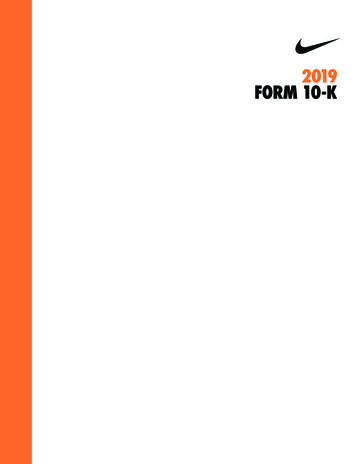
Transcription
FORM 10-K
UNITED STATESSECURITIES AND EXCHANGE COMMISSIONWashington, D.C. 20549FORM 10-K(Mark One)þ ANNUAL REPORT PURSUANT TO SECTION 13 OR 15(D) OF THE SECURITIES EXCHANGE ACT OF 1934FOR THE FISCAL YEAR ENDED MAY 31, 2019OR TRANSITION REPORT PURSUANT TO SECTION 13 OR 15(D) OF THE SECURITIES EXCHANGE ACT OF 1934FOR THE TRANSITION PERIOD FROMTO.Commission File No. 1-10635NIKE, Inc.(Exact name of Registrant as specified in its charter)OREGON93-0584541(State or other jurisdiction of incorporation)(IRS Employer Identification No.)One Bowerman Drive, Beaverton, Oregon97005-6453(Address of principal executive offices)(Zip Code)(503) 671-6453(Registrant's telephone number, including area code)SECURITIES REGISTERED PURSUANT TO SECTION 12(B) OF THE ACT:Class B Common StockNKENew York Stock Exchange(Title of each class)(Trading symbol)(Name of each exchange on which registered)SECURITIES REGISTERED PURSUANT TO SECTION 12(G) OF THE ACT:NONEIndicate by check mark: if the registrant is a well-known seasoned issuer, as defined in Rule 405 of the Securities Act. if the registrant is not required to file reports pursuant to Section 13 or Section 15(d) of the Act. whether the registrant (1) has filed all reports required to be filed by Section 13 or 15(d) of the Securities YESþNO þþ Exchange Act of 1934 during the preceding 12 months (or for such shorter period that the registrant was requiredto file such reports), and (2) has been subject to such filing requirements for the past 90 days.whether the registrant has submitted electronically every Interactive Data File required to be submitted pursuantþ to Rule 405 of Regulation S-T (§232.405 of this chapter) during the preceding 12 months (or for such shorterperiod that the registrant was required to submit such files).whether the registrant is a large accelerated filer, an accelerated filer, a non-accelerated filer, smaller reporting company or an emerging growthcompany. See the definitions of “large accelerated filer,” “accelerated filer,” “smaller reporting company” and “emerging growth company” in Rule 12b-2 ofthe Exchange Act.Large accelerated filer þ Accelerated filer Non-accelerated filer Smaller reporting company Emerging growth company if an emerging growth company, if the registrant has elected not to use the extended transition period for complying with any new or revised financial accounting standards provided pursuant to Section 13(a) of theExchange Act.whether the registrant is a shell company (as defined in Rule 12b-2 of the Act). þAs of November 30, 2018, the aggregate market values of the Registrant's Common Stock held by non-affiliates were:Class A Class B5,260,259,37094,690,612,760 99,950,872,130As of July 19, 2019, the number of shares of the Registrant's Common Stock outstanding were:Class A315,024,752Class B1,251,863,6211,566,888,373DOCUMENTS INCORPORATED BY REFERENCE:Parts of Registrant's Proxy Statement for the Annual Meeting of Shareholders to be held on September 19, 2019 are incorporated byreference into Part III of this Report.
NIKE, INC.ANNUAL REPORT ON FORM 10-KTABLE OF CONTENTSPAGEPART IITEM 1.ITEM 1A.ITEM 1B.ITEM 2.ITEM 3.ITEM 4.69BusinessGeneralProducts696969Sales and MarketingUnited States Market7070International MarketsSignificant CustomerProduct Research, Design and Development717172Manufacturing72International Operations and Trade73CompetitionTrademarks and PatentsEmployees737474Information about our Executive Officers75Risk Factors76Unresolved Staff Comments87Properties87Legal Proceedings87Mine Safety Disclosures87PART IIITEM 5.ITEM 6.ITEM 7.ITEM 7A.ITEM 8.ITEM 9.ITEM 9A.ITEM 9B.88Market for Registrant's Common Equity, Related Stockholder Matters and Issuer Purchases of Equity Securities88Selected Financial Data90Management's Discussion and Analysis of Financial Condition and Results of Operations92Quantitative and Qualitative Disclosures about Market Risk112Financial Statements and Supplementary Data114Changes in and Disagreements with Accountants on Accounting and Financial Disclosure153Controls and Procedures153Other Information153PART III154(Except for the information set forth under “Information about our Executive Officers” in Item 1 above, Part IIIis incorporated by reference from the Proxy Statement for the NIKE, Inc. 2019 Annual Meeting ofShareholders.)ITEM 10.ITEM 11.ITEM 12.ITEM 13.ITEM 14.Directors, Executive Officers and Corporate Governance154Executive Compensation154Security Ownership of Certain Beneficial Owners and Management and Related Stockholder Matters154Certain Relationships and Related Transactions and Director Independence154Principal Accountant Fees and Services154PART IVITEM 15.ITEM 16.155Exhibits and Financial Statement Schedules155Form 10-K Summary158Signatures160
PART IITEM 1. BUSINESSGENERALNIKE, Inc. was incorporated in 1967 under the laws of the State of Oregon. As used in this report, the terms “we,” “us,” “NIKE”and the “Company” refer to NIKE, Inc. and its predecessors, subsidiaries and affiliates, collectively, unless the context indicatesotherwise. Our NIKE digital commerce website is located at www.nike.com. On our NIKE corporate website, located atinvestors.nike.com, we post the following filings as soon as reasonably practicable after they are electronically filed with, orfurnished to, the United States Securities and Exchange Commission (the “SEC”): our annual report on Form 10-K, our quarterlyreports on Form 10-Q, our current reports on Form 8-K and any amendments to those reports filed or furnished pursuant toSection 13(a) or 15(d) of the Securities and Exchange Act of 1934, as amended. Our definitive Proxy Statements are also postedon our corporate website. All such filings on our corporate website are available free of charge. Copies of these filings are alsoavailable on the SEC's website (www.sec.gov). Also available on our corporate website are the charters of the committees of ourBoard of Directors, as well as our corporate governance guidelines and code of ethics; copies of any of these documents will beprovided in print to any shareholder who submits a request in writing to NIKE Investor Relations, One Bowerman Drive,Beaverton, Oregon 97005-6453.Our principal business activity is the design, development and worldwide marketing and selling of athletic footwear, apparel,equipment, accessories and services. NIKE is the largest seller of athletic footwear and apparel in the world. We sell ourproducts through NIKE-owned retail stores and through digital platforms (which we refer to collectively as our “NIKE Direct”operations), to retail accounts and a mix of independent distributors, licensees and sales representatives in virtually all countriesaround the world. Virtually all of our products are manufactured by independent contractors. Nearly all footwear and apparelproducts are produced outside the United States, while equipment products are produced both in the United States and abroad.PRODUCTSWe focus our NIKE Brand product offerings in six key categories: Running, NIKE Basketball, the Jordan Brand, Football (Soccer),Training and Sportswear (our sports-inspired lifestyle products). We also market products designed for kids, as well as for otherathletic and recreational uses such as American football, baseball, cricket, golf, lacrosse, skateboarding, tennis, volleyball,walking, wrestling and other outdoor activities.NIKE's athletic footwear products are designed primarily for specific athletic use, although a large percentage of the products areworn for casual or leisure purposes. We place considerable emphasis on innovation and high-quality construction in thedevelopment and manufacturing of our products. Sportswear, Running and the Jordan Brand are currently our top-sellingfootwear categories and we expect them to continue to lead in footwear sales.We also sell sports apparel covering the above-mentioned categories, which feature the same trademarks and are soldpredominantly through the same marketing and distribution channels as athletic footwear. Our sports apparel, similar to ourathletic footwear products, is designed primarily for athletic use and exemplifies our commitment to innovation and high-qualityconstruction. Sportswear, Training and Running are currently our top-selling apparel categories and we expect them to continueto lead in apparel sales. We often market footwear, apparel and accessories in “collections” of similar use or by category. We alsomarket apparel with licensed college and professional team and league logos.We sell a line of performance equipment and accessories under the NIKE Brand name, including bags, socks, sport balls,eyewear, timepieces, digital devices, bats, gloves, protective equipment and other equipment designed for sports activities. Wealso sell small amounts of various plastic products to other manufacturers through our wholly-owned subsidiary, NIKE IHM, Inc.,doing business as Air Manufacturing Innovation.2019 FORM 10-K69
PART IOur Jordan Brand designs, distributes and licenses athletic and casual footwear, apparel and accessories predominantly focusedon basketball using the Jumpman trademark. Sales and operating results for Jordan Brand products are reported within therespective NIKE Brand geographic operating segments.One of our wholly-owned subsidiary brands, Converse, headquartered in Boston, Massachusetts, designs, distributes andlicenses casual sneakers, apparel and accessories under the Converse, Chuck Taylor, All Star, One Star, Star Chevron and JackPurcell trademarks. Operating results of the Converse brand are reported on a stand-alone basis.Another of our wholly-owned subsidiary brands, Hurley, headquartered in Costa Mesa, California, designs and distributes a lineof action sports and youth lifestyle apparel and accessories under the Hurley trademark. Sales and operating results for Hurleyproducts are included within the NIKE Brand's North America geographic operating segment.In addition to the products we sell to our wholesale customers and directly to consumers through our NIKE Direct operations, wehave also entered into license agreements that permit unaffiliated parties to manufacture and sell, using NIKE-ownedtrademarks, certain apparel, digital devices and applications and other equipment designed for sports activities.SALES AND MARKETINGWe experience moderate fluctuations in aggregate sales volume during the year. Historically, revenues in the first and fourthfiscal quarters have slightly exceeded those in the second and third quarters. However, the mix of product sales may varyconsiderably as a result of changes in seasonal and geographic demand for particular types of footwear, apparel and equipment,as well as other macroeconomic, operating and logistics-related factors.Because NIKE is a consumer products company, the relative popularity of various sports and fitness activities and changingdesign trends affect the demand for our products. We must, therefore, respond to trends and shifts in consumer preferences byadjusting the mix of existing product offerings, developing new products, styles and categories and influencing sports and fitnesspreferences through extensive marketing. Failure to respond in a timely and adequate manner could have a material adverseeffect on our sales and profitability. This is a continuing risk. Refer to Item 1A. Risk Factors.We report our NIKE Brand operations based on our internal geographic organization. Each NIKE Brand geographic segmentoperates predominantly in one industry: the design, development, marketing and selling of athletic footwear, apparel andequipment. The Company's reportable operating segments for the NIKE Brand are: North America; Europe, Middle East & Africa(EMEA); Greater China; and Asia Pacific & Latin America (APLA), and include results for the NIKE, Jordan and Hurley brands.Sales through our NIKE Direct operations are managed within each geographic operating segment.Converse is also a reportable operating segment and operates predominately in one industry: the design, marketing, licensingand selling of casual sneakers, apparel and accessories. Converse direct to consumer operations, including digital commerce,are reported within the Converse operating segment results.UNITED STATES MARKETFor fiscal 2019, NIKE Brand and Converse sales in the United States accounted for approximately 41% of total revenues,compared to 42% and 46% for fiscal 2018 and fiscal 2017, respectively. We sell our NIKE Brand, Jordan Brand, Hurley andConverse products to thousands of retail accounts in the United States, including a mix of footwear stores, sporting goods stores,athletic specialty stores, department stores, skate, tennis and golf shops and other retail accounts. In the United States, we utilizeNIKE sales offices to solicit such sales. During fiscal 2019, our three largest United States customers accounted forapproximately 24% of sales in the United States.70NIKE, INC.
PART IOur NIKE Direct and Converse direct to consumer operations sell NIKE Brand, Jordan Brand, Hurley and Converse products toconsumers through various digital platforms. In addition, our NIKE Direct and Converse direct to consumer operations sellthrough the following number of retail stores in the United States:U.S. RETAIL STORESNIKE Brand factory storesNUMBER217NIKE Brand in-line stores (including employee-only stores)29Converse stores (including factory stores)109Hurley stores (including factory and employee-only stores)29TOTAL384In the United States, NIKE has six significant distribution centers. Four are located in Memphis, Tennessee, two of which areowned and two of which are leased. Two other distribution centers, one located in Indianapolis, Indiana and one located inDayton, Tennessee, are leased and operated by third-party logistics providers. NIKE Brand apparel and equipment are alsoshipped from our Foothill Ranch, California distribution center, which we lease. Smaller leased and third-party leased andoperated distribution facilities are located in various parts of the United States.INTERNATIONAL MARKETSFor fiscal 2019, non-U.S. NIKE Brand and Converse sales accounted for approximately 59% of total revenues, compared to 58%and 54% for fiscal 2018 and fiscal 2017, respectively. We sell our products to retail accounts, through our own NIKE Directoperations and through a mix of independent distributors, licensees and sales representatives around the world. We sell tothousands of retail accounts and ship products from 67 distribution centers outside of the United States. During fiscal 2019,NIKE's three largest customers outside of the United States accounted for approximately 14% of total non-U.S. sales.In addition to NIKE and Converse owned digital commerce platforms in over 45 countries, our NIKE Direct and Converse direct toconsumer businesses operate the following number of retail stores outside the United States:NON-U.S. RETAIL STORESNIKE Brand factory storesNUMBER648NIKE Brand in-line stores (including employee-only stores)57Converse stores (including factory stores)63TOTAL768International branch offices and subsidiaries of NIKE are located in Argentina, Australia, Austria, Belgium, Bermuda, Brazil,Canada, Chile, China, Croatia, the Czech Republic, Denmark, Finland, France, Germany, Greece, Hong Kong, Hungary, India,Indonesia, Ireland, Israel, Italy, Japan, Korea, Macau, Malaysia, Mexico, the Netherlands, New Zealand, Norway, Panama, thePhilippines, Poland, Portugal, Russia, Singapore, Slovakia, Slovenia, South Africa, Spain, Sri Lanka, Sweden, Switzerland,Taiwan, Thailand, Turkey, the United Arab Emirates, the United Kingdom, Uruguay and Vietnam.SIGNIFICANT CUSTOMERNo customer accounted for 10% or more of our worldwide net revenues during fiscal 2019.2019 FORM 10-K71
PART IPRODUCT RESEARCH, DESIGN AND DEVELOPMENTWe believe our research, design and development efforts are key factors in our success. Technical innovation in the design andmanufacturing process of footwear, apparel and athletic equipment receives continued emphasis as we strive to produceproducts that help to enhance athletic performance, reduce injury and maximize comfort, while reducing waste.In addition to our own staff of specialists in the areas of biomechanics, chemistry, exercise physiology, engineering, industrialdesign, sustainability and related fields, we also utilize research committees and advisory boards made up of athletes, coaches,trainers, equipment managers, orthopedists, podiatrists and other experts who consult with us and review designs, materials,concepts for product and manufacturing process improvements and compliance with product safety regulations around the world.Employee athletes, athletes engaged under sports marketing contracts and other athletes wear-test and evaluate products duringthe design and development process.As we continue to develop new technologies, we are simultaneously focused on the design of innovative products incorporatingsuch technologies throughout our product categories. Using market intelligence and research, our various design teams identifyopportunities to leverage new technologies in existing categories responding to consumer preferences. The proliferation of NIKEAir, Lunar, Zoom, Free, Flywire, Dri-Fit, Flyknit, Flyweave, ZoomX, React, Adaptive and NIKE technologies, among others,throughout our Running, NIKE Basketball, Jordan Brand, Football (Soccer), Training and Sportswear categories typifies ourdedication to designing innovative products.MANUFACTURINGWe are supplied by 112 footwear factories located in 12 countries. The largest single footwear factory accounted forapproximately 9% of total fiscal 2019 NIKE Brand footwear production. Virtually all of our footwear is manufactured outside of theUnited States by independent contract manufacturers which often operate multiple factories. For fiscal 2019, contract factories inVietnam, China and Indonesia manufactured approximately 49%, 23% and 21% of total NIKE Brand footwear, respectively. Wealso have manufacturing agreements with independent contract manufacturers in Argentina and India to manufacture footwearfor sale primarily within those countries. For fiscal 2019, four footwear contract manufacturers each accounted for greater than10% of footwear production and in the aggregate accounted for approximately 61% of NIKE Brand footwear production.We are supplied by 334 apparel factories located in 36 countries. The largest single apparel factory accounted for approximately14% of total fiscal 2019 NIKE Brand apparel production. Virtually all of our apparel is manufactured outside of the United Statesby independent contract manufacturers which often operate multiple factories. For fiscal 2019, contract factories in China,Vietnam and Thailand produced approximately 27%, 22% and 10% of total NIKE Brand apparel, respectively. For fiscal 2019,one apparel contract manufacturer accounted for more than 10% of apparel production, and the top five contract manufacturersin the aggregate accounted for approximately 49% of NIKE Brand apparel production.The principal materials used in our footwear products are natural and synthetic rubber, plastic compounds, foam cushioningmaterials, natural and synthetic leather, nylon, polyester and canvas, as well as polyurethane films used to make NIKE Air-Solecushioning components. During fiscal 2019, Air Manufacturing Innovation, a wholly-owned subsidiary, with facilities nearBeaverton, Oregon and in St. Charles, Missouri, as well as independent contractors in China and Vietnam, were our suppliers ofthe Air-Sole cushioning components used in footwear. The principal materials used in our apparel products are natural andsynthetic fabrics and threads (both virgin and recycled); specialized performance fabrics designed to efficiently wick moistureaway from the body, retain heat and repel rain and/or snow; and plastic and metal hardware. NIKE's independent contractors andsuppliers buy raw materials for the manufacturing of our footwear, apparel and equipment products. Most raw materials areavailable and purchased by those independent contractors and suppliers in the countries where manufacturing takes place.NIKE's independent contract manufacturers and suppliers have thus far experienced little difficulty in satisfying raw materialrequirements for the production of our products.Since 1972, Sojitz Corporation of America (“Sojitz America”), a large Japanese trading company and the sole owner of ourredeemable preferred stock, has performed import-export financing services for us. During fiscal 2019, Sojitz America providedfinancing and purchasing services for NIKE Brand products sold in certain NIKE markets including Argentina, Brazil, Canada,India, South Africa and Uruguay, excluding products produced and sold in the same country. Approximately 5% of NIKE Brandsales occurred in those countries. Any failure of Sojitz America to provide these services or any failure of Sojitz America's bankscould disrupt our ability to acquire products from our suppliers and to deliver products to our customers in those markets. Such adisruption could result in canceled orders that would adversely affect sales and profitability. However, we believe that any suchdisruption would be short-term in duration due to the ready availability of alternative sources of financing at competitive rates.72NIKE, INC.
PART IINTERNATIONAL OPERATIONS AND TRADEOur international operations and sources of supply are subject to the usual risks of doing business abroad, such as theimplementation of, or potential changes in, foreign and domestic trade policies, increases in import duties, anti-dumpingmeasures, quotas, safeguard measures, trade restrictions, restrictions on the transfer of funds and, in certain parts of the world,political instability and terrorism. We have not, to date, been materially affected by any such risk, but cannot predict the likelihoodof such material effects occurring in the future.In recent years, uncertain global and regional economic and political conditions have affected international trade and increasedprotectionist actions around the world. These trends are affecting many global manufacturing and service sectors, and thefootwear and apparel industries, as a whole, are not immune. Companies in our industry are facing trade protectionism in manydifferent regions, and in nearly all cases we are working together with industry groups to address trade issues and reduce theimpact to the industry, while observing applicable competition laws. Notwithstanding our efforts, protectionist measures haveresulted in increases in the cost of our products, and additional measures, if implemented, could adversely affect sales and/orprofitability for NIKE, as well as the imported footwear and apparel industry as a whole.We monitor protectionist trends and developments throughout the world that may materially impact our industry, and we engagein administrative and judicial processes to mitigate trade restrictions. We are actively monitoring actions that may result inadditional anti-dumping measures and could affect our industry. We are also monitoring for and advocating against otherimpediments that may limit or delay customs clearance for imports of footwear, apparel and equipment. NIKE also advocates fortrade liberalization for footwear and apparel in a number of regional and bilateral free trade agreements. Changes in U.S. tradepolicies, including new and potential tariffs or penalties on imported goods, may negatively affect U.S. corporations withproduction activities outside the U.S., including NIKE. There have also been discussions and commentary regarding retaliatoryactions by countries affected by the new tariffs and other changes in U.S. trade policy, and certain foreign governments haveinstituted or are considering imposing retaliatory measures on certain U.S. goods, which could negatively affect U.S. corporationswith business operations and/or consumer markets in those countries. Depending on the extent that certain new or proposedreforms are implemented by the U.S. government and the manner in which foreign governments respond to such reforms, it maybecome necessary for us to change the way we conduct business, which may adversely affect our results of operations. Inaddition, with respect to proposed trade restrictions targeting China, which represents an important sourcing country andconsumer market for us, we are working with a broad coalition of global businesses and trade associations representing a widevariety of sectors to help ensure that any legislation enacted and implemented (i) addresses legitimate and core concerns, (ii) isconsistent with international trade rules and (iii) reflects and considers China's domestic economy and the important role it has inthe global economic community.Where trade protection measures are implemented, we believe that we have the ability to develop, over a period of time,adequate alternative sources of supply for the products obtained from our present suppliers. If events prevented us fromacquiring products from our suppliers in a particular country, our operations could be temporarily disrupted and we couldexperience an adverse financial impact. However, we believe we could abate any such disruption, and that much of the adverseimpact on supply would, therefore, be of a short-term nature, although alternate sources of supply might not be as cost-effectiveand could have an ongoing adverse impact on profitability.Our international operations are also subject to compliance with the U.S. Foreign Corrupt Practices Act, or "FCPA", and otheranti-bribery laws applicable to our operations. We source a significant portion of our products from, and have important consumermarkets, outside of the United States, and we have an ethics and compliance program to address compliance with the FCPA andsimilar laws by us, our employees, agents, suppliers and other partners.COMPETITIONThe athletic footwear, apparel and equipment industry is highly competitive on a worldwide basis. We compete internationallywith a significant number of athletic and leisure footwear companies, athletic and leisure apparel companies, sports equipmentcompanies and large companies having diversified lines of athletic and leisure footwear, apparel and equipment, includingadidas, Anta, ASICS, Li Ning, lululemon athletica, Puma, Under Armour and V.F. Corporation, among others. The intensecompetition and the rapid changes in technology and consumer preferences in the markets for athletic and leisure footwear andapparel and athletic equipment, constitute significant risk factors in our operations.2019 FORM 10-K73
PART INIKE is the largest seller of athletic footwear and apparel in the world. Important aspects of competition in this industry are: Product attributes such as quality; performance and reliability; new product innovation and development and consumerprice/value. Consumer connection and affinity for brands and products, developed through marketing and promotion; social mediainteraction; customer support and service; identification with prominent and influential athletes, public figures, coaches,teams, colleges and sports leagues who endorse our brands and use our products and active engagement throughsponsored sporting events and clinics. Effective sourcing and distribution of products, with attractive merchandising and presentation at retail, both in-store anddigital platforms.We believe that we are competitive in all of these areas.TRADEMARKS AND PATENTSWe believe that our intellectual property rights are important to our brand, our success and our competitive position. We pursueavailable protections of these rights and vigorously protect them against third-party theft and infringement.We use trademarks on nearly all of our products and believe having distinctive marks that are readily identifiable is an importantfactor in creating a market for our goods, in identifying our brands and the Company, and in distinguishing our goods from thegoods of others. We consider our NIKE and Swoosh Design trademarks to be among our most valuable assets and we haveregistered these trademarks in almost 170 jurisdictions worldwide. In addition, we own many other trademarks that we use inmarketing our products. We own common law rights in the trade dress of several significant shoe designs and elements. Forcertain trade dress, we have sought and obtained trademark registrations.We have copyright protection in our design, graphics and other original works. In some instances, we also obtain registeredcopyrights.We file for, own and maintain many U.S. and foreign utility and design patents protecting components, technologies, materials,manufacturing techniques, features, functionality, and industrial and aesthetic designs used in and for the manufacture of variousathletic and leisure footwear and apparel, athletic equipment and digital devices and related software applications. These patentsexpire at various times.We believe our success depends upon our capabilities in areas such as design, research and development, production andmarketing and is supported by our intellectual property rights, such as trademarks, patents and trade secrets, among others.We have followed a policy of applying for and registering intellectual property rights in the United States and select foreigncountries on trademarks, inventions, innovations and designs that we deem valuable. We also continue to vigorously protect ourintellectual property, including trademarks, patents and trade secrets against third-party infringement.EMPLOYEESAs of May 31, 2019, we had approximately 76,700 employees worldwide, including retail and part-time employees. Managementis committed to maintaining an environment where all NIKE employees have the opportunity to reach their full potential. None ofour employees are represented by a union, except for certain employees i
united states securities and exchange commission washington, d.c. 20549 form 10-k (mark one) þ annual report pursuant to section 13 or 15(d) of the securities exchange act of 1934 for the fiscal year ended may 31, 2019 or transition report pursuant to section 13 or 15(d) of the securities exchange act of 1934 for the transition period from to .
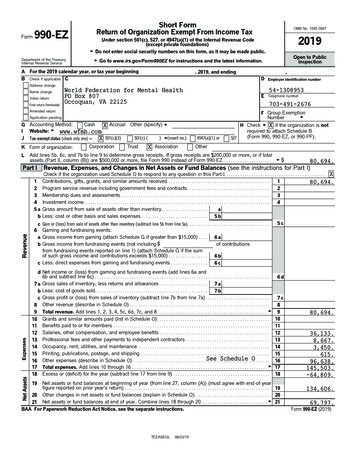
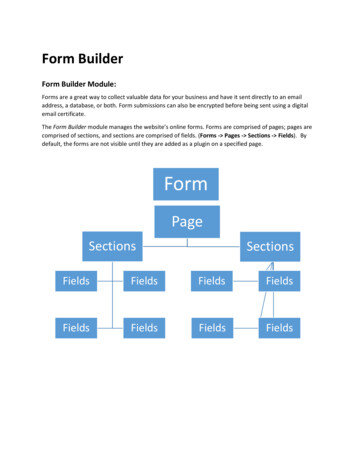
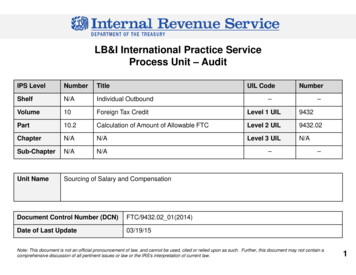
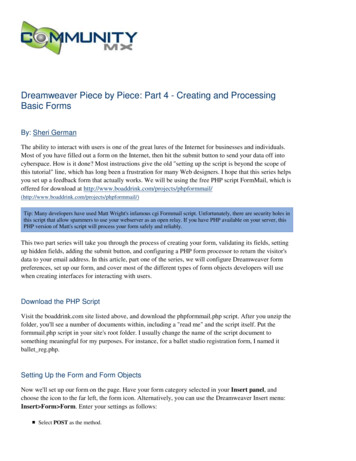




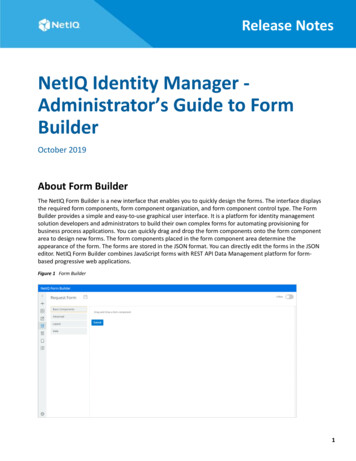

![[MS-IPFFX]: InfoPath Form File Format - Microsoft](/img/62/ms-ipffx.jpg)
![[MS-IPFFX]: InfoPath Form File Format](/img/62/5bms-ipffx-5d-210720.jpg)